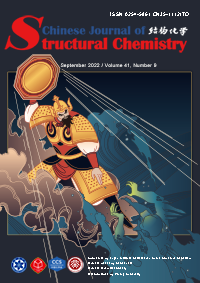
Cover Picture
Two Bisligand-Coordinated Luminescent Zn(II)-Coordination Polymers for Sensing of Ions and Pesticides in Aqueous Solutions
The demon mirror (Zhaoyaojing in Chinese) in the Journey to the West, a Chinese classical literature, can reflect the original shape of demons. Both as-prepared coordination polymers, [Zn(PTA)(DTP)(H2O)2]·(DMF) (CP-1) and [Zn(BTC)(DTP)]·(CH3CN)1.5·(H2O)4 (CP-2), can act as demon mirror to detect the different environmental pollutants. This image presented the magic demon mirror to reflect the presence of pollutants, the demons in environment, which provided an opportunity for the readers to appreciate Chinese traditional culture.
Transition Metal Boride-Based Materials for Electrocatalytic Water Splitting
Feng-Ge Wang, Xin Liu, Qian-Xi Lv, Bin Liu*, Yong-Ming Chai and Bin Dong*
Chin. J. Struct. Chem. 2022, 41, 2209008-2209044 DOI: 10.14102/j.cnki.0254-5861.2022-0117
September 22, 2022
transition metal borides/borates, electrocatalysts, hydrogen evolution reaction (HER), oxygen evolution reaction (OER), overall water splitting
ABSTRACT







